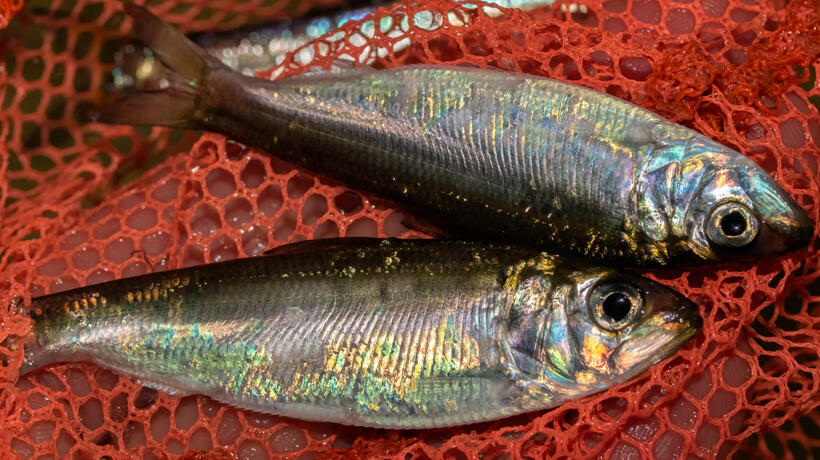- Division of Fisheries and Wildlife
Media Contact for Monitoring juvenile shad on the Connecticut River
Media Contact, MassWildlife

Video: Monitoring Juvenile Shad on the Connecticut River
Skip this video Monitoring Juvenile Shad on the Connecticut River.American shad are anadromous, meaning they spend most of their lives in the ocean, but return to fresh water to spawn. During these migrations, shad must travel long distances, and can often face barriers such as dams. While there has been long-term monitoring of upstream migration of adult shad through fish passage counts at major dams for decades, less is currently known about the impact of dams on juvenile shad as they travel to the ocean.
This fall, MassWildlife biologists are completing the fifth year of data collection to learn about the relationship between juvenile and adult shad numbers in the Connecticut River. This project is in collaboration with the US Fish and Wildlife Service, Vermont Fish and Wildlife, and New Hampshire Fish and Game. Shad populations in the Connecticut River have substantially decreased when compared to historic abundance due to a variety of factors, including climate change, overfishing, river alterations, pollution, water withdrawals, and dams. There are currently four main-stem dams on the Connecticut River (Holyoke, Turners Falls, Vernon, and Bellows Falls) which each have varying impacts on adult upstream migration, juvenile production, and eventual outmigration of juvenile shad back to the Atlantic Ocean.
Over the past 5 years, biologists have used electrofishing boats at night to temporarily immobilize and collect juvenile shad from each of the 3 major dammed sections of the Connecticut: Holyoke-Turner’s, Turner’s-Vernon, and Vernon-Bellows. These surveys, conducted during the fall, are used to calculate estimates for juvenile abundance and body condition. Several reports and presentations1,2 have been produced since the project’s inception in 2017, but overall data analysis is ongoing. Initial findings suggest that juvenile shad abundance is reduced due to poor upstream passage of migrating adult shad as well as downstream passage of both adults and juveniles. Biologists hope the results will provide perspective on how current shad production is impacted above each successive main-stem dam.
Management implications of this study could help inform improvements to both upstream and downstream fish passage. While passage rates at main-stem dams have improved somewhat in recent decades, they remain below restoration targets. Dams are clearly impacting both adult and juvenile populations, with broad population and ecological implications that are not yet fully understood. Forage fish like American shad are important prey resources for numerous freshwater predators popular with anglers, including small and largemouth bass, walleye, and channel catfish. Increasing adult and juvenile shad abundances have significant implications for anglers of not only shad themselves but also a wide array of other sportfish that depend on this important forage species.
1Juvenile American Shad Monitoring in the Connecticut River (2020)
2Juvenile American Shad Assessment in the Connecticut River (2017)
